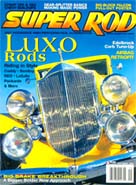

Words:MATT EMERY
Photography: Gear Vendors and Matt Emery
Reprint from Super Rod Magazine, September 2001
Whoever came up with the adage about more not always being better must never have driven a motorized vehicle and dreamed about having just one more gear. Whether you have a three, four- or five-speed, auto or manual, there will come a time when you need that taller gear. Or perhaps your gear splits are such that you need one right between first and second or second and third. In addition to your super rod (frequently overlooked in the gear-splitting department), you could be towing your car and trailer, or your boat trailer, for that matter, and when you hit a hill, one gear has you at redline and the other has you bogging.
Late model overdrive installations can be just as bad. The most common swap is a 700R4, which has a great low gear, but, consequently, the shift to second is further jump in ratio, which causes your super rod to sound a little more like grandma’s Taurus than those close-ratio shifts of a performance transmission. The engine requires gear multiplication to maximize performance by keeping the engine in the power band. Yep, gears are good. With lots of proper ratios, you can have a small block performing like a big block. Think of the big rigs (18-wheelers). They use about 20 gears to pull big loads with just six liters of motor, and we don’t have to tell you how they scoot right along.
There is another adage that goes like this: work smart, not hard. That is the primary idea behind Gear Vendors Under/Overdrive unit. Years ago, Gear Vendors identified what enthusiasts needed, saw what they were going through, and knew fundamentally that what was needed was not a replacement for the stock transmission in a vehicle, but an enhancement, a transmission gear supplement that was both rugged and versatile enough to adapt to a variety of installations. Today, GV Under/Overdrive are sold for everything from street rods to drag and off-road racers, to the trucks and RVs towing them to the track
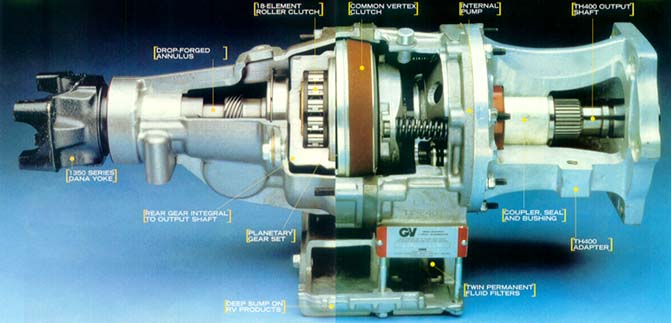
Page Two
Gear Vendors supplies auxiliary transmission kits that bolt right to the tailhousing of your stock manual or automatic trans. With a car manual transmission, the typical Gear Vendors customer already has close ratios, but is looking to retain the bullet-proof high-power handling of his four-speed and add a an over-drive top gear without having to heavily modify the car or cut up the tunnel. M21/22 Muncies, Ford top loaders and T10 are all popular Gear Vendors applications. Since the Gear Vendors unit is guaranteed to handle 1,200-plus hp, it is a logical choice for the bad-to-the-bone crowd. In an automatic transmission, the Gear Vendors unit offers even more.
Simply put, Gear Vendors’ Under/Overdrive unit effectively doubles the number of gears in the transmission. Many people erroneously think that the GV unit is simply an overdrive for the transmission. Not so. The Gear Vendors unit actually splits the distance between each gear. That means you can start in first, but instead of shifting to second when you want power (or just the sweet sound of shifting through close ratios), with the flick of a switch you turn on the GV unit, and with a bark from the tires, you are in first-over (which is right between first and second). As you continue to accelerate and shift to second, flick off the GV for second-direct. Then, as your engine speed builds, punch the GV
in again for second-over. The overdrive kit comes with either a high/low-beam-type foot button (for stock appearing), a T-handle with button (for ratchet and gate shifter) or a steering wheel button (an option) for the manual control. The splitting continues with third gear, and so on, or you can choose not to activate the unit in a particular gear for normal transmission gear multiplication. This is another brilliant feature of the GV unit: It is “on” only if you want it to be. The electronics that come with the installation kit allow this “manual” or full “auto” use. Move the dash switch to “auto” and your ride will act just as it came factory, with a four-speed auto instead of a three-speed (or a five-speed instead of a four-speed). For much of your everyday cruising, this is a great feature. It lets the main trans work through its normal gears and then, just as with the factory equipment, shifts into overdrive automatically at highway speed.
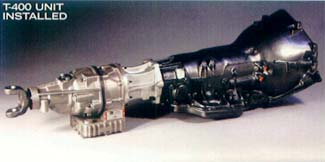
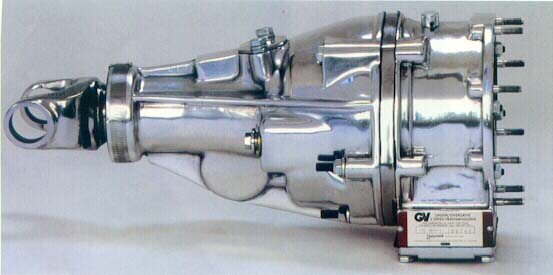
Page Three
If you already have a four-speed auto with factory overdrive, and then add the Gear Vendors unit, you will also have an OOD gear (double overdrive). That is, there will be a gear over the final overdrive ratio you have now that is another 28 percent faster. Regardless of transmission type, you now have the option of going to a 28 percent lower gear for more out-of-the-hole power, and get it all back at cruise, with the GV unit. Or, as is most common, it will make your existing gearing perform better through gear-splitting and pay for itself by reducing fuel consumption and knocking 500-700 rpm of wear off your cruising speed (or more depending on road speed).
Operationally, the GV unit utilizes a sophisticated reaction planetary gear system far stronger that those found in your conventional automatic transmission. A common vertex cone clutch is used in conjunction with 700 psi of hydraulic pressure to lock down the 22-tooth sun gear. One of the significant advantages of this design is it ultra-low parasitic loss, which is why you can find GV units in quarter-mile drag cars and rear-engines dragsters.
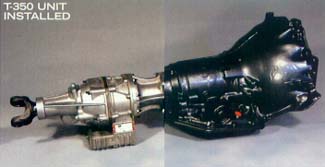
This design eliminates heat normally seen on clutch packs and is one of the reasons this unit can handle 1200-plus hp reliably. The Gear Vendors unit does not share fluid with the main trans or require any kin of cooler, even when used in racing off-road pro truck in the Baja 1000 or Dakar. Launch torques and all direct-drive forward torques are handled by an 18-element roller clutch, which stays engaged until overrun by the planet gears. This means there is no neutral or possibility of missed shifts. The system is either on or off, and that’s it. Shifting can be done at any throttle position, including full throttle. If the dash-switch green light is illuminated, the overdrive is on and the shift is quick and positive (just as you would want).
All automatic-transmission applications come with a two-year unlimited-mileage warranty up to 1,200hp. The warranty for manual transmissions in cars is also two years. In fact, even full-on race-only applications get a one-year warranty. Now here’s a kicker for us: Have you ever heard of a company offering a 30-day money-back guarantee on hard parts? Gear Vendors does.
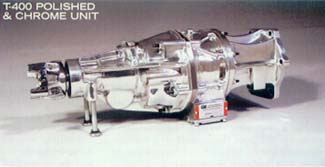
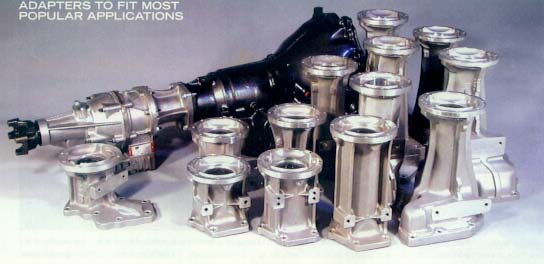
Page Four
So it takes the guesswork out of the purchase for you. If you buy one and it is not everything you hoped it would be, you can return if for a full refund! Gear Vendors is so confident that you will find the unit to be awesome, it backs it up with a no-gamble policy. When asked about the guarantee, Rick Johnson responded: “It is not that we are smarter than the manufacturers (Ford, GM, Dodge). Our product is just specifically designed for severe duty. Lots of 300M (steel), Nitrite and Nitrige processes, and high-quality tolerances. Our pressure circuit, which works at 700 psi, uses a relief valve that is air gauged to 0.0008 diametrical clearance. That is probably the lowest number most people have ever seen, and it’s half that per side on the actual part. ASM Racecars just gave the Ford Pro Truck (built by Stewart & Stewart) its first win in the Tunisian Rally. That’s a 7,500-mile race. It’s like doing 15 Baja 500s back-to-back. The product in that truck is identical to what we ship to a guy with a street rod. Engineered with almost no regard for cost.”
Initially, the Gear Vendors unit sounds a little pricey, at about $2,200 for most applications (a complete kit). But when you add up the costs for a late-model trans swap, including labor,


it starts to look competitive. You can easily install a Gear Vendors unit yourself, since the transmission stays in the vehicle. It’s stronger as a result, and you use it to do all the gear splitting.
If you think we sound excited, we are. We can see not only the benefits, but also those who are benefiting, and there are more than you may think. If you’ve got a lot of horsepower (blower or nitrous), the Gear Vendors unit is the only real choice beyond a standard-ratio built transmission. If you have a small-block super rod and want to wake it up, no other transmission is going to give you the performance and close-ratio satisfaction of a Gear Vendors unit. Period! The word is out among the “heavy users,” including Granatelli’s twin-turbo 220-mph Camaro, Jack Chisenhall’s Cool 200 Studebaker, Rad rides by Troy, Larry and Chris James’ Baddest Willys, and Dave Addison’s Buckwheat Delivery. Roy Brizio is a believer, and Norm Francis and John Lingenfelter also have realized the benefits. The word is, use it once and you’ll want it in everything you drive. Troy Trepanier had a GV unit in the shop truck he uses to tow his cars. He realized what a benefit it was to street rodding, and now he’s a dealer.


1. Every Gear Vendors Unit that goes out the door is tested. This tenacious approach to quality ensures that the product will survive in the harsh conditions of the real world. 2. The electronics are very simple. You can use a dash-mounted button to activate the unit, or go with a button on the shift handle (like the Hurst version shown here). 3. A Gear Vendors technician installs the appropriate adapter on a new unit prior to shipping. If you buy your unit through TPI, it will come with a transmission attached. 4. There’s no waiting in line for an under/overdrive unit. The company has plenty in stock to feed the need for gear splitters.
Page Five
Gear Vendors makes adapter kits for virtually any transmission, including Ford C4, C6, E4)D and 4R100; GM Powerglide, TH350 short and long, TH400 short and long, 700R4, 4L60E and 4L80E; Mopar TF727 short and long, TF904 (coming soon), 518/618 and 47RH. Transfer-case kits are also available for 4x4s and many truck and car manual transmissions. If you are reading this magazine, your car surely fits somewhere within these parameters.
Obviously, fuel economy has become a big issue, and is now a good reason to buy the GV Under/Overdrive. Most vehicles improve mileage in the 20 percent or better range.
Did we mention that a GV unit can help you win at the track? Being ex-drag racers, we typically never thought of gear-splitters and quarter-mile racing. For the two rig, maybe, but not the race car. In addition to their off-road success, Gear Vendors units are becoming quite popular at Bonneville in land-speed vehicles and various classes of drag racing, including the bracket doorslammer classes, as well as the rear-engine Powerglide-equipped dragsters. As mentioned, a GV unit will allow you to go 28 percent lower in your rear gear and get it all back with the shift into overdrive. So, a car that can use more torque out of the hole and was running 4.56 gears can go down to 5.83 and get the same top end with the GV unit. A Powerglide can choose and then maybe afford to go to a close ratio such as the stock. 1.76 and retain higher rpm on the 1-2 shift than with a low first. The GV unit can make for an efficient and cost-effective three- or four-speed. With Mustangs, Camaros and Chevelles, the company typically sees a three-speed automatic where the customer needs the split on the 2-3 shift to keep the horsepower up when the aerodynamics are really starting to load the car. These cars, of course, also benefit with a lower rear gear to improve their 60-foot times.
The split between first and second is sometimes not used on the strip because it offers so much torque multiplication compared to second that it just blows the tires off (traction wise). On the street, however, this gear (first-over) is all sorts of fun. While parading and cruising the fair grounds, second is often too fast and first too slow, so it solves this problem. When you want to impress the girls on the corner, first-over offer so much torque that even half throttle get a nice bark from the tires without the ticket-getting speed of second. Full throttle and first-over will get you a nice rolling burnout.

Of course, top speed is what many of our readers will care about, and that is the primary function of an overdrive. In this case, the GV unit will make your ride go 1.286 times its current speed at the same rpm. To give you an example, that means you will go 75 mph at the current engine rpm that drive you only 58 mph.
Now you can see why we are so excited. This is a product that can have a profound impact on your super rod, for that matter, on a wide variety of vehicles in you garage, beyond the street rod. It clearly goes well beyond simply being an over-drive unit. Personally, we have greatly overlooked this unit in our street rod and street machine buildups. And we have had first-hand experience with the product, since we purchased a unit years ago for our older Chevy dualie with 454 and 4.10s. We found the overdrive a great utilitarian piece of equipment and have now replaced the Chevy with our brand-new Ford F-350 dualie, which is also scheduled for a Gear Vendors installation.
But what got us on this kick, and the basic reason for this story, is that, recently, we were perplexed by the limited gearing available for the Ford big block that will power the Buckaroo Wildwoody, so we sought some advice. Bill Hyzy of TPI Performance expounded on the benefits of the Gear Vendors unit. Hyzy is one of the country’s larger distributors of transmission-swap 700R4s, but he is also big on the Gear Vendors units for his customers who have some real muscle under the hood. So, from TPI you can buy an entirely new trans with the GV unit already attached, which is cool for a project such as ours, where we needed the trans, too. We now realize that going with the muscle-car-era three-speed and backing it with a Gear Vendors unit (which will provide six forward ratios) is a better choice in higher-horsepower super rod applications, because of the limitations found with the 700R4s, AODs and the like. We have Hyzy to thank for this bit of wisdom.
Page Six
Considering the performance to be gained and the fun to be had, plus the indestructible nature of the engineering at hand, we have developed an entirely new attitude toward the foundation of our powertrain choices. When you also consider the high cost of fuel, the Gear Vendors unit will pay for itself with fuel savings and reduced wear and tear, not to mention its flexibility. We can now run engine and tire combinations that may not have been the best choice, which, to our way of thinking expands both ends of the performance range of the vehicle. And the electronics that come with the unit offer great features but are simple to install, and the entire unit can go from one car to the next. Gear Vendors has become an integral part of our current and forward-thinking rod-building philosophy.
Upgrades started 22 years ago, and today’s units are so impressive that they have garnered two of SEMA’s Best Engineered Product awards (the highest award in the industry, given to just one company worldwide each year, and Gear Vendors has been the recipient twice, so great are the improvements). The GV units are factory equipment on GM’s Callaway Corvettes as well as Fleetwood motorhomes, and are found in some of the fastest and most powerful street and racing cars and trucks. The company certainly has some followers.
Ken R. Johnson started Gear Vendors, Inc. in 1979. A transmission re-manufacturer by trade, he specialized in hard-to-find cores, such as for Mercedes and other vehicles, which at the time were considered “exotic”. While doing this, he became aware of the GKN overdrive unit that was used in such vehicles as Triumphs and certain AMC products. The GKN was the design of DeNormanville, who is perhaps the most famous transmission designer ever. A DeNormanville overdrive was used behind the Ford three-speed manual, which was identical to the top loader, except that the three-speed had a planetary overdrive. When AMC went bankrupt in 1975, there were more than 5,000 brand-new overdrive units sitting in a warehouse. Johnson bought them all. Of course, his company was used to re-manufacturing roughly 10 of these units a year. He now had about 100-year supply.
Thinking that the unit had been over-designed, Johnson began tinkering and looked to broaden its application. At the time, he owned a ’77 Chevy pickup with a 350 engine/350 trans combination. He worked up a little adapter made from billet aluminum and tried it on the Chevy. It worked like a charm. Being friends with Byron Blair, who at the time was president of Lenco Racing Transmissions (the same Lenco transmissions used by dragsters and Pro Stock cars), the two struck up a partnership of sorts. In fact, Blair served as president of Gear Vendors while still running Lenco, so the fledgling company had access to the Lenco foundry and machinery, which enable Gear Vendors to make adapters for the main transmissions of the day (Turbo 350 and 400, C6, etc.). Blair retired in 1990 and was subsequently bought out by Johnson.
Although Gear Vendors has become a licensed manufacturer for GKN, the unit is sold today is vastly different, with many upgrades. Improvements such as the use of Raybestos linings, as well as the fluid pressures being fine-tuned and held to exacting tolerances, go along with the constant improvements made by the Gear Vendors engineers. So good are the designs that the unit has received the Best Engineered Product award at the annual SEMA show two times, in 1981 and 1989. What’s the secret to this manufacturing success? “Know your customer, build it better than anyone else will think is reasonable, let the cost fall where it may, back it up with real service, and let the competition try to figure out how to make something cheap work half as well.”
Product Profiles:
Gear Vendors, Inc., Dept. SPR, 1717 N. Magnolia Ave., El Cajon, CA 92020, 800/999-9555, www.gearvendors.com
TPI Performance, Dept. SPR, 231 s. Lindberg St., Griffith, IN 46319, 219/934-0900, www.tpiperformance.com